New Chumash Chair Kenny Kahn
Kenny Kahn Talks about the Casino, Taxes, and Camp 4
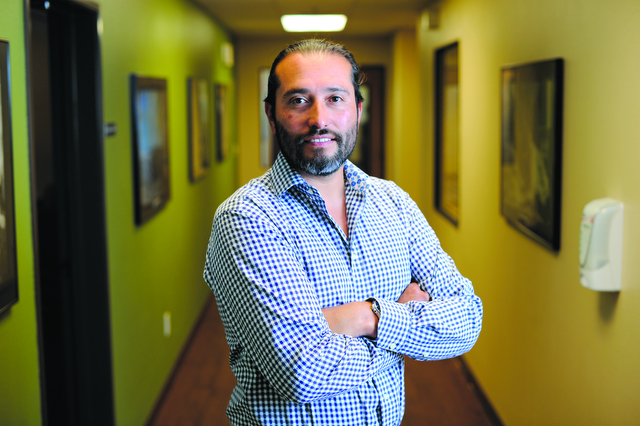
Kenneth Kahn is the kind of guy women swoon over and men envy. Young, handsome, and ponytailed, he drives a Tesla and rides any bike with two wheels. To call him a smooth talker would be an understatement. His charm appears to be a natural gift. And now he is the leader of a sovereign nation.
Three months ago, Kahn, 39, was elected chair of the Santa Ynez Band of Chumash Indians. For at least 5,000 years, Chumash lived in populous villages throughout the Central Coast and Channel Islands. During the Spanish-Mexican era, however, European diseases, the Mission systems, and racial violence decimated their numbers.
In 1901, the federal government recognized the Santa Ynez Band as an official Native American nation, putting it under control of the Bureau of Indian Affairs (BIA) and giving it sovereign rights over its 144-acre reservation along Highway 246. Today, even though other groups claim to be Chumash, only the Santa Ynez Band has federal status. Though the tribe has not released exact numbers, it is estimated that around 140 people meet the Band’s required one-quarter Chumash blood ancestry to become registered members.
Throughout the last century, life on the reservation was one of abject poverty. Houses went without electricity until the 1970s. Many Chumash worked on nearby farms and ranches, sent their kids to public schools, and generally kept a low profile in the greater Santa Ynez Valley community.
That all changed at the millennium, when California voted to allow federally recognized tribes to establish Indian Casinos in exchange for licensing fees. After a few missteps, the Chumash Casino became one of the most successful in the state. Now each tribal member receives an undisclosed monthly dividend — in 2004 the Los Angeles Times reported it was around $30,000 per member.
Leading the tribe for the past 17 years was Vincent Armenta, 53, who unexpectedly resigned in March. Under his leadership, the tribe’s enterprises transformed a downtrodden bingo hall into a spectacularly successful operation, including a new 12-story resort, nearby restaurants and hotels, and a music venue attracting world-class performers.
As the tribe’s financial situation improved, however, tensions with their Santa Ynez Valley neighbors arose. First, opponents railed against the casino. Then outrage erupted over the 12-story hotel project, the largest building in the county. Now the battleground is over the tribe’s annexation plans for the 1,400 acres known as Camp 4 near to the present reservation. The Chumash purchased the bucolic land in 2010 from the late Fess Parker for $40 million. He sold it because rigorous county zoning codes prohibited intense development.
Three years ago, the tribe petitioned the U.S. government to annex that land into their reservation. If the tribe is successful, as they are confident they ultimately will be, Camp 4 will no longer be regulated by county codes or provide county property taxes. The tribe argues they desperately need Camp 4 for 143 houses, as there are only 99 houses on the reservation, half of which are inhabited by tribal elders. The nonnative valley residents contend that such dense urbanization would destroy the rural character of the Santa Ynez Valley. Nine appeals — one by Santa Barbara County — have been filed with the Bureau of Indian Affairs protesting the annexation.
In debating this issue before the county recently, Armenta, whose style was bristly and bold, accused the supervisors of bringing the Chumash to the “watering hole” for a discussion, but “if we don’t drink the poisoned water,” he contended, the county would “shoot us in the back of the head when we leave.”
Into this tension comes the new chair, Kahn, who has spent the last 14 years working in tribal government. At age 25, he was elected to the Chumash Business Committee, the tribe’s five-member governing body.
Raised on the reservation by his single mother, Kahn is a member of the Pace family, who have a long tradition of being active in tribal life. As a boy, he was greatly influenced by his maternal grandparents, who lived nearby. He began working for the tribe at age 14, shining floors and scrubbing toilets. His grandmother, Rosa Pace, who died last year, founded the Chumash health clinic in 1974 in a small trailer. The clinic now handles 17,000 patients’ visits each year, including low-income nonnative people.
For years, Kahn has been the friendly face of the Chumash, showing up at public events, sometimes with a check — the tribe gives $1 million each year to area nonprofits and organizations. He’s a self-described communicator, and many believe that if anyone can smooth relations with the county government and valley residents, it is Kahn.
It is a tough row to hoe, however. The county wants the tribe to waive its sovereign immunity, which has proved difficult, but the tribe also knows it must be part of the community where its children go to school and its families interact with other valley residents.
For 10 years, the county had refused to meet with Chumash leaders as equal members of two governmental bodies. Last year, county supervisors Doreen Farr and Peter Adam finally agreed to sit down with Armenta and Kahn in a series of seven public hearings over Camp 4. No deal was reached, and the atmosphere was not pleasant.
The Santa Barbara Independent recently sat down with Kahn. Below is an edited version of the conversation.
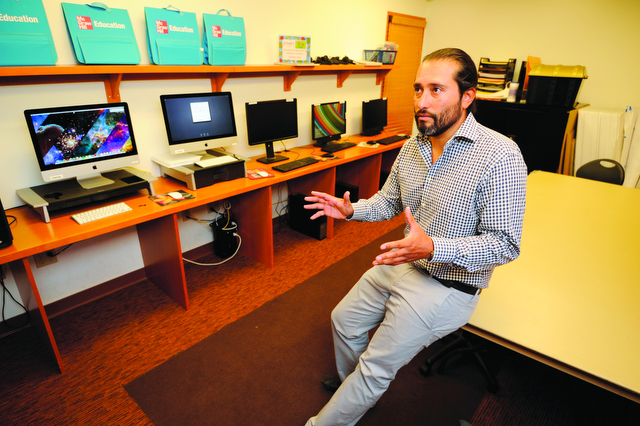
How do you think you compare to former chair Vincent Armenta? It’s still too early to tell. During chairman Armenta’s years, we’ve seen a lot of positive growth — with education particularly. We’ve developed our language dictionary, which has empowered us to teach our youth our language. I see the pride that our people have in being Chumash, and I want to support them as best I can. I think my perspective growing up on the reservation is valuable. I have a real vision. I’m going to be firm on issues, and I’m going to be passionate — as chairman Armenta was.
And I have more hair than he does, and I can golf a lot better.
What was it like growing up on the reservation? Some of the earliest memories I have are at age 6 or 7 at the old Tribal Hall. I remember the big semitrucks coming down, and the rolling casters of boxes of beans and rice. We would come together and help sort and take our boxes home. There was evaporated milk, canned beef, blocks of cheese — that is probably one of the fondest memories. Any Native American that has grown up on a reservation — they’re going to remember the government cheese.
Your grandparents played a big role in your life. Tell me about them. My grandmother, Rosa Pace, was a nurse. She was also the founder of the health clinic. I have early memories of the clinic when it was a single white trailer with volunteer doctors. I was a little kid crawling around under the desk, and I can still smell the mustiness from the carpet because it was a donated trailer with donated furniture.
I would travel around with grandma and grandpa to different reservations. Back then it wasn’t by plane. It was grandpa and grandma driving their station wagon, having to stop and put water in their radiator so we could make it without overheating.
What were you like in high school? I was a shy kid, but with a little bit of a push. … I wasn’t a troubled kid. All through grade school I can’t even recall a time I got in trouble. It was mostly because I just didn’t get caught. There were probably about five or six days where I ditched school.
I graduated a semester early. It wasn’t because I was super smart. It was because I wanted to get out of school. We were told we weren’t smart enough to go to college. … I had teachers actually tell me, “You are not smart enough to go.”
How did you experience racism? We were the Indians, and from some of the parents’ perspective, this was a third-world country. There was no law enforcement; this was a drug haven. In every community, you have a couple known troublemakers. But I wasn’t really exposed to that, so when I would get that treatment from parents — and sometimes it trickled down to the kids — I didn’t really get it. “Oh, I can’t come over? Fine, no big deal.”
So these slights never bothered you? I did have one incident when my high school girlfriend — her parents didn’t want her dating me because I was from the reservation. Her father was a fire battalion chief, and her mother was very well respected in the community. She really resisted them, and they ended up moving her to a different school. I was 16 or 17, and of course I was devastated. My heart was broken. It was my first girlfriend, and she loved me and was beautiful and smart. It was devastating as a teen in love. Today, I can’t imagine that still taking place.
How do the experiences of kids now compare to yours as a kid? And how does it impact tribal decisions? Today it is about politics. Then it was poverty. Today we support our education programs tenfold. We’ve got probably over 1,000 kids — and adults — who are eligible for education assistance. [These are the descendants of tribal members.] We pay 100 percent of their college tuition. In the last eight years, the number of our college graduates has tripled because of the scholarship.
Dr. Niki Sandoval is our education director and is also on the State Board of Education. Having her as a resource to guide the tribe’s educational needs is important. All of what’s created today really stems from the experiences of the tribe early on.
What are some misconceptions about the tribe? People are being told, “Well the tribe doesn’t have to follow the law.” But we do. We just don’t have the exact same oversight of those laws. And there’s tribal law.
Some people say, “Well you guys can make that up as you go.” Well this is a direct democracy at its core, so when it comes to any of our initiatives or laws, the people have a strong voice, and it’s in collaboration with federal guidelines.
Going back to my childhood, people said, “The tribe is a third-world country; there’s no law enforcement.” That’s false. Public Law 280 has given the state criminal jurisdiction over tribes. [In the past sometimes] law enforcement would refuse to service the reservation because we didn’t have the money to pay for those services. Today, we have contracts. We pay more per capita than any other contracted city around — Buellton, Solvang.
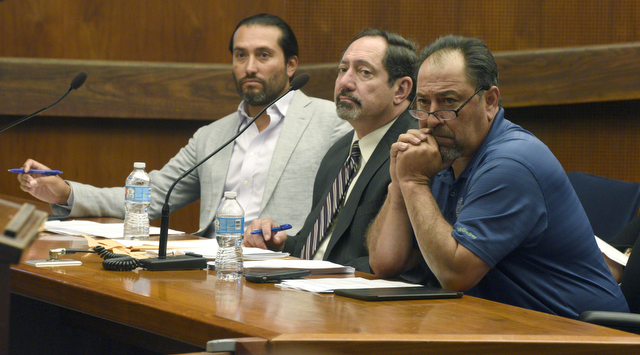
How about the issue of taxes? It’s hard when you have elected leaders saying that the tribe doesn’t pay taxes.
A majority of our members live off the reservation and pay the exact same taxes everyone else does. I live on the reservation. I pay property taxes because I own property off the reservation in Santa Barbara County [and on a property in Tahoe]. I pay all the other taxes that everyone else does. The only thing I don’t pay is state income tax. The tribe, with its gaming agreement, shares revenue with the state. Even though it’s not a tax, the tribe is paying on behalf of its membership.
The tribe’s profits have grown immensely since you were a kid, and now tribal members receive dividends, I’ve heard as much as $50,000 a month. Is that accurate? How does it work? Yeah, the tribe has some resources, and, yes, the tribal members receive a stipend, and that is really governed by having a fully funded government. The way it works is that the tribe has to fund all its programs, all its government — a number of programs that have to be 100 percent funded. Once those programs are funded, we can have a dividend. The better we perform, the bigger we can grow our programs, and the more we can give dividends. The Bureau of Indian Affairs and the Secretary of the Interior regulate the dividend. That way, there aren’t tribes that just give all their money to their members and can’t provide services.
Do you run into a lot of comments like, “They don’t have to work and they get money”? I do. I run into it a lot. If we’re referencing drug use or any other kinds of negative interpretation of a community member — yeah, we have a couple members who have challenges. We do our best to support them. But that’s not something I’d really want to highlight because that’s just a normal community. You function with high achievers, low achievers, and middle achievers … some that just drag the system down — not purposely, but they just weren’t given the right resources growing up to contribute. That’s what some of our opposition focuses on.
One argument I hear sometimes is that your tribal members are not really Indians. Do you still hear that? I still hear that. They say Vincent Armenta is a Mexican. You know, I’m Mexican. I’m a lot of different things. I’m three-eighths Chumash. I’m also from Santa Rosa Chumash [not a federally recognized band]. I identify with a number of nationalities and am proud of it. There is nobody who is 100 percent Chumash that I know of.
Since the current blood requirement is one-quarter Chumash, that is of course dwindling membership. Since only the tribe can make that decision, is the tribe going to have to expand membership? Absolutely. That’s a discussion that we have regularly. We will need to expand our membership. And we will. That’s a tribal decision.
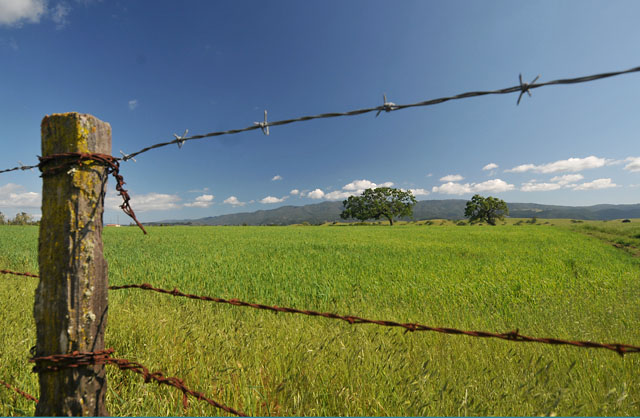
Let’s talk about Camp 4. What is your vision for it? We want it to look like the neighboring community. We would like to stay within a 300-acre envelope — plus or minus a couple of acres, which would be one- or two-acre parcels. We’re thinking of a planned community with low impact — something that we can be proud of. We have a blank piece of paper, so it’s an opportunity to create something really special.
During the public meetings earlier this year, Supervisor Peter Adam asked then-chair Armenta for the tribe’s 100-year plan. The plan presented in March upset many people in the audience because the map had a lot more commercial area than the tribe previously said they planned. What happened there? We were extremely upset with this 100-year plan he was asking for — so upset that we finally said fine. We threw some color on a piece of paper. Let’s give them what they want. And now they are using it as a … “See, this is what the tribe intends to do with this land tomorrow.” But we said, “No. No. No. You asked for a [100-year plan]. The county doesn’t have a 100-year plan; why should the tribe have to do a 100-year plan? ”
How are the negotiations going to go when they start back up again later this year? I don’t want people to forget we’re here, not because the county wants to be here, but we had to go around through a congressional committee to push the county to the table. I think that’s an important thing because it shows the good will of the tribe in wanting to make an agreement. We need to have something to protect us once this land goes into federal trust because we’re a community and our strength lies in being able to function as a community.
A recent op-ed, “What Have the Chumash Negotiations Wrought?” suggested that the tribe always changes its mind. For instance, the casino now has a temporary permit to sell alcohol on the gaming floor, something that was never part of the original plan. The alcohol license is something we’ve worked on for a number of years. It really didn’t come along until we started aiming for the Four Diamond resort recognition. One of the key qualifiers could be wine and spirits. The tribe takes it very seriously. That’s why we immediately raised the age [for entrance to the gaming floor] from 18 to 21 and introduced a number of programs including having conversations with the sheriff and other agencies to help mitigate those issues.
What leverage does the county have? They have absolutely none, and I say that very boldly because we have absolutely no need for a cooperation agreement. And that’s what people don’t get. I don’t have to sit with the county. I want to because it’s good for our community, and my kids and also twenty-something nieces and nephews. They don’t need to be fighting these political battles in grade school. … And that’s what’s happening — all of this is transferring to our youth. It’s ugly.
Recently, a federal bill, HR 1157, to immediately annex Camp 4 passed the House Natural Resources Committee and is set to go to a vote on the House floor. Rep. Lois Capps was the only person to vote against the legislation, which was authored by a congressmember who represents a district in Northern California. Tell me about that. [Rep. Doug LaMalfa] has multiple tribes in his district. He understands tribal sovereignty. And he also sits on a couple boards that manage tribal resources. So we felt that he was a good person to do this because he understands. Now Lois doesn’t want to get in a fight, doesn’t want to get her hands dirty. God bless her; she’s done amazing things for health care and women’s rights. But when the job is tough, she doesn’t want to touch it. These are the kind of tactics that unfortunately the tribe has to take in order to move forward.
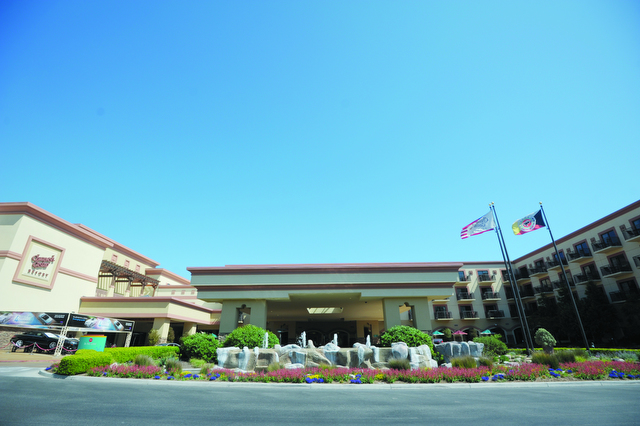
You have personally donated to a number of Democratic candidates, including Capps, President Obama, and Salud Carbajal, who is now running in the 24th congressional race. Will you endorse his candidacy? I don’t know if the tribe will officially endorse a candidate. We’ve had a great dialogue with Salud. He’s stated publicly that government-to-government is something he’s wanted for a long time. He’s indicated this cooperation agreement is something he wants to see. I think he’d make an amazing congressional representative. We’ve met with Justin Fareed. He was at the COLAB [Coalition of Labor, Agriculture and Business] event at our facility. I haven’t had a lot of discussions with Justin Fareed. It’s kind of hard to really understand where he is coming from.
What about in the 3rd supervisorial district race between Joan Hartmann and Bruce Porter? We have not endorsed either candidate. They both have stated that they oppose fee-to-trust. [Fee-to-trust is the process by which tribes petition the BIA to annex land into their reservation.] They both are consistent in a strong commitment in opposing any gaming expansions. I respect both those comments. Regardless of who takes that position, we look forward to developing a working relationship.
You’re 39 years old. You’re a young guy. Have you woken up in the middle of the night freaked out, like, what did I get myself into? Regardless if I’m chairman or on the board or just an enrolled member, I’m always going to be here to support the tribe. As far as going home at night and waking up in a panic, I do that because I have a teenager, Austin.



